Rouen ducks are a breed primarily raised for meat production and poultry exhibition since they are poor egg layers. They bear an uncanny resemblance to Mallard ducks, except for a second facial stripe that Rouen ducks have. Another difference they have is their flying abilities.
Rouen ducks can’t fly since they are large and heavyset birds, they are unable to fly and, consequently, migrate. However, they can jump or fly at a low angle and short distance, but they typically avoid doing so.
If you want to know more about Rouen ducks, their origins, physical attributes, distinctive characteristics, egg-laying capabilities, and other interesting information, simply read further this article!
Rouen Duck History
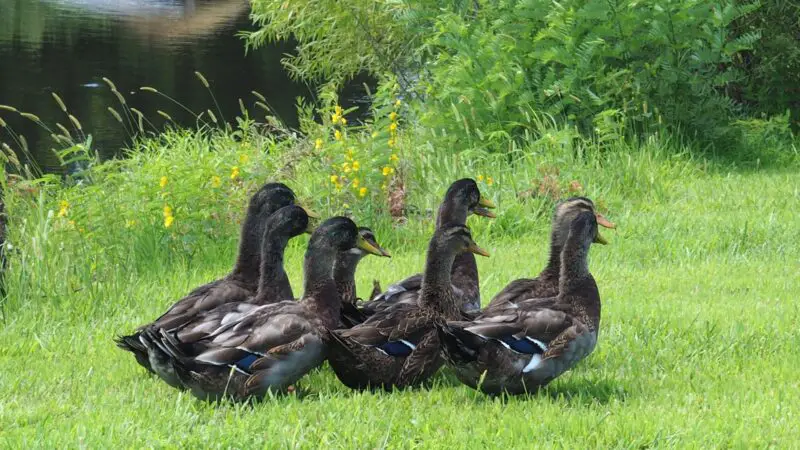
Domestic ducks were raised by farmers in France several hundred years ago, with the inclusion of the Rouen duck, which had an uncanny resemblance to large Mallard ducks.
Rouen ducks were especially abundant in Languedoc (now part of Occitanie today) and Normandy. These are the regions where duck liver pies were considered a local delicacy.
Around the start of the 19th century, these ducks were introduced in England. They were called various names, including “Rhone,” which was an area located in Southwestern France, “Rohan,” named after a Catholic Cardinal, “Roan,” which means a mixture of colors, before finally arriving to its official name “Rouen,” which is a town located in North-central France.
Once it was in England, duck breeders began to redesign the bird’s characteristics, particularly its size, body shape, and colors, through selective breeding. It wasn’t until 1850 that a gentleman named D. W. Lincoln from Worcester introduced Rouen ducks to the United States. The breed quickly gained popularity as a colorful, all-purpose farm duck.
Rouen ducks were formally recognized by the American Poultry Association in 1874 as they fit into the criteria of the organization’s standard of perfection.
Rouen Duck Identification
What Do Rouen Ducks Look Like?
Rouen ducks have two distinct body shapes. The Standard Rouen duck is massive in size, with a large and bulky body, round head, deep keel, medium-sized and concave beak, and an arched back. On the other hand, the Production Rouen duck is lighter than the Standard Rouen and also has a leaner body with a more upright carriage.
Males, or drakes, are characterized by their dark green head, tail, and upper neck, dark brown breast and lower neck, dark gray upper back, and light gray lower body.
Moreover, they have a white band that circles their neck and a diagonal white or blue line that crosses their wings. Drakes also have bright orange feet and shanks, yellow beaks, and black eyes.
Females, or hens, also have the same diagonal pattern on their wings. However, the rest of their plumage is usually shades of brown with black texturing or mottling. Its beak, shanks, and feet are the same color as drakes but darker in coloration.
Breeders have developed through crossbreeding various color varieties, such as Black, Pastel, Fawn, and Blue. But none of these have been accepted by the APA.
How Long Does a Rouen Duck Live?
Rouen ducks live an average life expectancy of 5 to 9 years. They can reach up to 12 years if they’re well taken care of. This is even longer than the lifespan of Mallard ducks from which they originated.
How Big Do Rouen Ducks Grow?
Not much is known about the Rouen duck’s exact measurements. However, it is believed that they resemble Mallard ducks. Taking into account that Mallard ducks are 50 to 65 centimeters in length, Rouen ducks may be also somewhere in that range, if not larger.
Are Rouen Ducks a Heavy Breed?
Rouen ducks are considered a heavyweight duck breed. Standard-bred ducks weigh about 4.1 to 5.4 kilograms, while production-bred ducks weigh around 2.7 to 3.6 kilograms.
Rouen Duck Wingspan
There is currently no information available regarding the wingspan of Rouen ducks. However, Mallard ducks have wingspans that measure 82 to 95 centimeters. Rouen ducks may measure somewhere in that range as well.
What Is Rouen Duck Known For?
Rouen ducks are primarily raised for their meat, which makes great delicately-flavored roasts. Consumers say that they have a lighter flavor compared to other duck breeds. In fact, this duck breed is a superior bird meat in Europe due to the time it takes for them to mature.
Consequently, this makes them an unfeasible choice for commercial meat production. It is better suitable for small farms or home cooking. Additionally, Rouen ducks are also raised as exhibition poultry.
Where Do Rouen Ducks Originate?
It is believed that they have come from France, where they were abundant in population and considered a local delicacy among residents. They were introduced later on in 1800 to England, where they were further refined through selective breeding, and in 1850 in the United States.
What Are the Distinct Characteristics of a Rouen Duck?
Rouen ducks are distinguished from Mallard ducks by the presence of a second facial stripe located under their eye. They are also not as noisy as other duck breeds. However, females can get talkative, especially if they have ducklings with them.
How to Tell Male From Female Rouen Ducks?
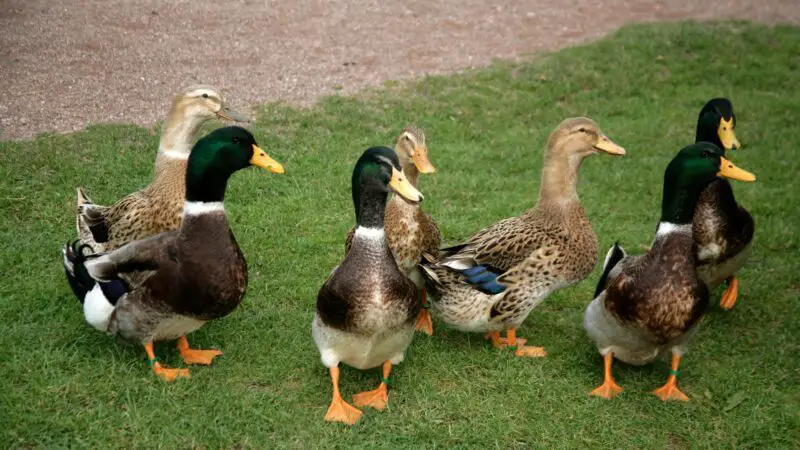
A telltale sign is their physical appearance. Males have an iridescent dark green hue on their heads and yellow beaks, while females have mahogany brown heads with a brown or nearly black beak. Interestingly, since males have brighter plumages than females, males also have more complex displays during courtship.
Another physical characteristic of males is that they have a fleshy, elongated projection in their cloaca, called a phallus,. This serves as their reproductive organ, while females have an oviduct opening.
You can also tell the differences between their calls. Males have a softer-sounding quack, while females are louder and can be heard for miles since they utilize it to rally their ducklings.
Are Rouen Ducks Good Pets?
Rouen ducks are good pets since they have a calm temperament and thrive on social interactions, not just with other ducks but also with humans. They are also affectionate with their owners, preferring to be held and cuddled, which makes them ideal companions. Additionally, they are great pest and weed control birds for your backyard.
What Do Rouen Ducks Eat?
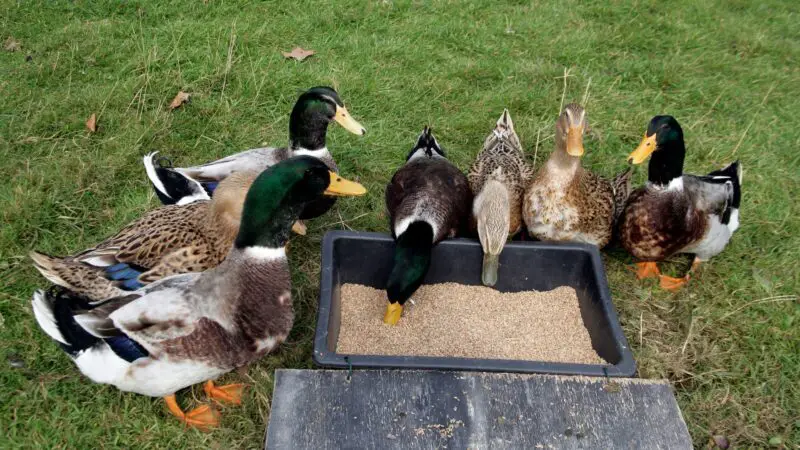
Rouen ducks usually feed on pupae and larvae found under rocks, as well as plant material (primarily seeds, grasses, and grains), aquatic animals (including small fish) and vegetation, crabs, and snails. Rouen ducks can also be fed with commercial feeds, as well as fruits and vegetables to supplement their nutrition.
When Do Rouen Ducks Lay Eggs?
Generally, hens can start producing when they are between 7 to 9 months of age, depending on the month they were hatched. Those that were hatched in April until July can come into production as early as 4 to 7 months since they are more exposed to the day.
On the other hand, ducks that were hatched between September until January will be of egg-producing age by 8 to 9 months since they had less exposure to sunlight.
Ducks usually lay eggs between the middle of March until the end of July, depending on the breeder. Rouen ducks will maintain a rate of 50% (in other words, if you have 50 hens, only 25 eggs are produced) for 5 months.
How Often Do Rouen Ducks Lay Eggs?
Rouen ducks are only able to produce 35 to 125 eggs a year. This means that, unlike most ducks, they don’t lay an egg every day. They have a larger gap between egg-laying intervals.
What Color Are Rouen Duck Eggs?
Rouen duck eggs are either white or blue in coloration that may or may not be tinted green, similar to the Mallard duck.
Are Rouen Duck Eggs Good to Eat?
Information regarding the flavor of Rouen duck eggs is currently unknown as they are not usually raised for their eggs but rather for their meat which is known to be flavorful. In general, duck eggs have a richer flavor profile than chicken eggs, which makes them an acquired taste for consumers.
Do Rouen Ducks Go Broody?
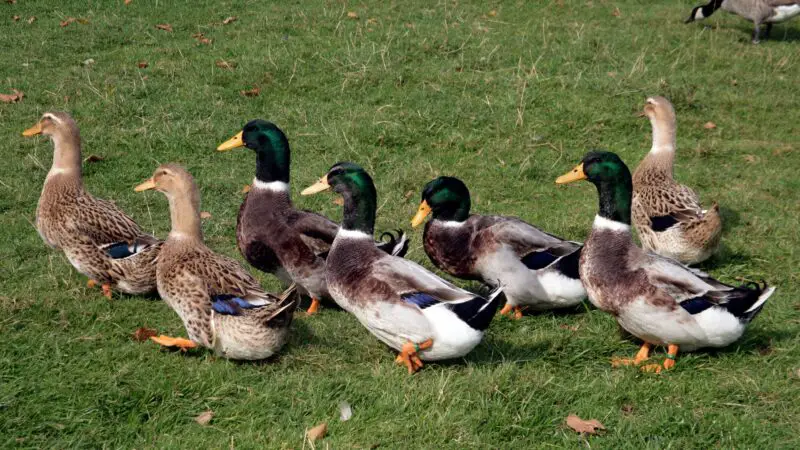
Despite not being prolific egg-layers, Rouen ducks, nonetheless, exhibit brooding behavior. However, they are not recommended to sit on their eggs during incubation as they may break them due to their large size.
Commercial producers usually store these eggs first under ideal storage conditions, usually at a 13°C temperature and 75% relative humidity before incubating the eggs artificially using an incubator.
When Do Male Rouen Ducks Change Color?
Rouen ducks develop their distinguishable green head and colorful wing colorations when they reach around 15 weeks of age. However, they achieve a dull green color as early as 6 weeks. Before that, they don’t have much of a difference in appearance from females.
Can Rouen Ducks Fly?
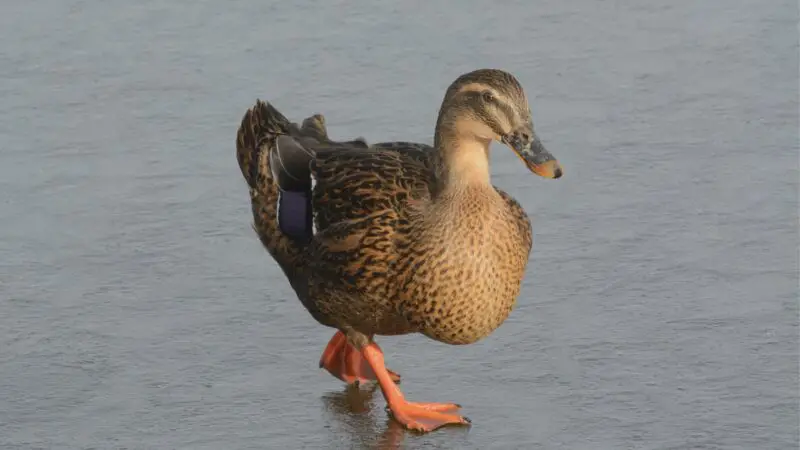
Rouen ducks are unlikely to fly since they have a heavyset bodies. They can, instead, jump and possibly fly at a low angle and short distance.
Do Rouen Ducks Migrate?
Rouen ducks don’t migrate since they are not able to fly greater distances, they are also unable to migrate. Additionally, they don’t need to since they are being kept in captivity.
Are Rouen Ducks Loud?
Rouen ducks are loud, but not as much as other ducks, although females tend to be loud as they vocalize and call to their young.
How to Raise Rouen Ducks?
- Obtain your ducks from a reputable breeder. Rouen ducks are not meant for egg production, so it’s more economical than they are raised for their meat.
- The first thing your ducks need when they arrive on your doorstep is water. Simply dip the beak of each duckling into the water as a way of teaching them where the water is located. This will then prevent them from getting dehydrated.
- Place them in a pen with a heat lamp. The temperature should be at 90°F to 95°F, gradually decreasing it by 5° a week until the ducklings are about 3 to 4 weeks old or until the temperature of the pen is at 70°F.
- Construct a brooder guard or circle made out of cardboard so that the ducklings naturally huddle around water, heat, and food. This is also done to prevent drafts during their first week. You can remove the brooder guard when they are a week old to provide space for them to move around.
- Feeders and waterers should be placed around the pen. Have it cleaned and replenished constantly. To avoid any spillage, fill the feeders with food only halfway. Raise the feeders about the same height as a duckling’s back to prevent duck manure and litter from getting into the feeders.
- Commercial feeds are available in the market, just make sure to select a high-protein feed during the ducklings’ first 2 weeks, then a low-protein diet thereafter. Avoid purchasing medicated feeds. Meat birds are best grown when fed chick starters and developer feeds, preferably with lower amounts of protein and energy content.
- Maintain your flock by regularly sanitating their living areas, have them regularly checked by a local veterinarian annually or routinely, and provide them with clean and sufficient food and water. If you are in an area that is particularly hot, construct a swimming area if you can.
- When the time comes for you to sell them to the market or to consume them, choose the ducks that look vigorous, have strong legs, proportionate body length and size, straight and leveled keels, and proper color markings.
How to Tell the Difference Between Rouen and Mallard Ducks?
Rouen ducks have a second facial stripe, located under their eye, while Mallard ducks only have a single facial stripe. Rouen ducks are also considerably heavier, with a more powerful build than Mallards.
List of Sources
Commonly Confused Ducks in Central Florida
The Evolution of Duck Courtship
